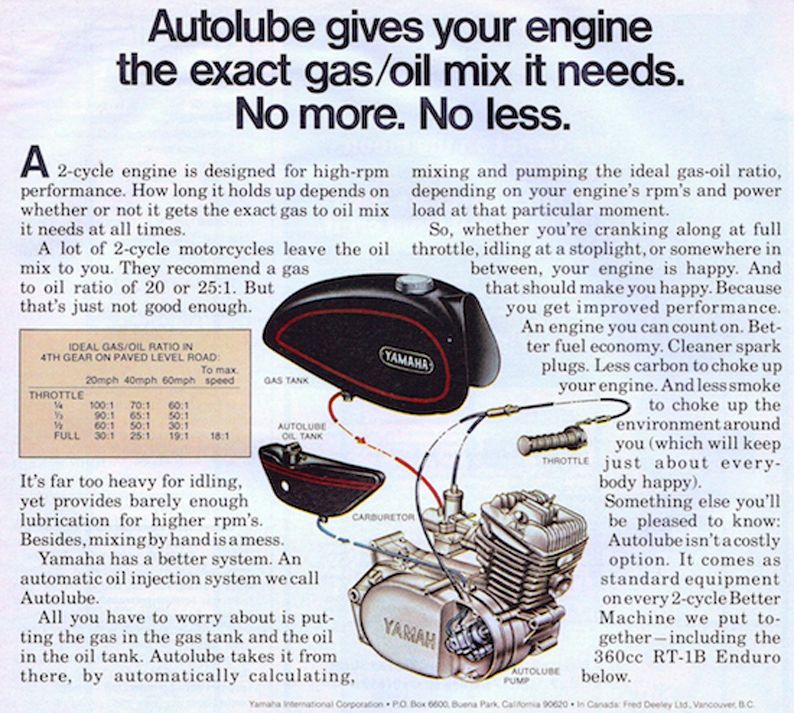Here is some information from a Company that spent a lot of time & money (dyno & racing) researching this stuff.
Yamaha did as much as (or more than) anybody to develop the 2T engine technology that is relevant to our VMX era.
They determined that 2 stroke engines require different Fuel:Oil ratios at different engine speeds, loads & throttle openings.
This is the chart they released with the new Autolube system back in 1968.
From Digga's article link.

see the whole DTI thread here:
http://forum.ozvmx.com/index.php?topic=37632.0From this chart it is simple to see that
40:1 or even leaner, is more than sufficient for many riders.
Just locate your own "successfully tested" F:O ratio in the chart and then read off your average throttle setting & speed.
Of course
We All Knew Better than Yamaha, and it was the first thing pulled off a DT or MX.

Before we hear the argument; that technology & manufacturing & metallurgy has improve greatly since then, of course it has.
Modern Go-Kart engines have the full benefit of all
off that and more but as
Lozza said. they still need a lot of oil, just to survive.
In 1968, Yamaha were first and second place in 125cc & 250 cc GP championships, in 1970 they held the first 5 or 6 championship places in the 350cc.
Their technology was world leading then and was way beyond normal production standards for the era.
I might argue about lubrication improvements, as much of the 'progress' has been to designed to minimise environmental impacts (eg. reducing smoke levels and providing biodegradable emissions). From a 'pure lubrication' point of view we haven't bettered Castor Oil.
Better engineering has allowed oil manufacturers to get away with lesser grade base oils for their retail products.
No hard recommendations for any-one here, you are free to use what 'works', for you.
(But an honest look at the chart provides some clues).
Cheers, DJ